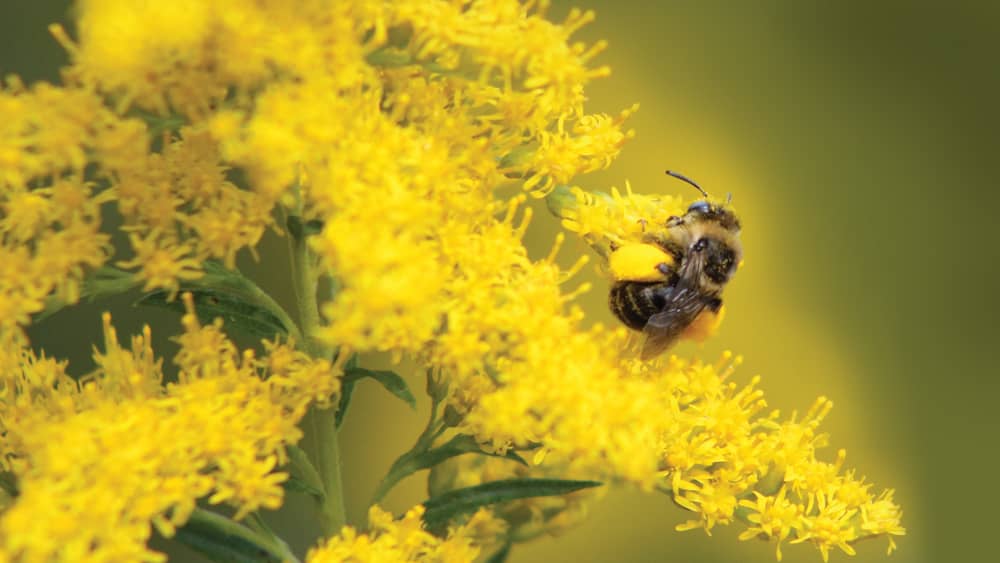
Monarch butterflies, fluttering their delicate orange and black wings as they dart from one flower to the next, are a striking sight. Their appearance makes them superstars of the pollinator world, but they’re just one of the many species that fertilize plants. Bees, bats and hummingbirds are also among the diverse creatures that most flowers depend on if they are to produce fruit and seeds, and like butterflies, they play an essential role in the ecosystems that sustain agriculture. Many pollinators that were once abundant, however, are disappearing from the landscape, as their numbers are drastically decreasing and put their survival at risk.
The decline is alarming, but people are becoming increasingly aware of the plight of pollinators and are giving nature a hand by creating new habitats to help reverse the downward trend. Jordan Vineyard & Winery in Healdsburg’s Alexander Valley, for instance, has dedicated several acres of native grassland on its 1,200-acre estate for conversion to pollinator gardens. When the multi-year project, estimated to cover 12 acres, is complete, it will be one of the largest such endeavors in the United States. Jordan unveiled the first four gardens in April, just in time for Earth Day, but an interest in pollinators goes back further and started with bees.

Lisa Mattson, Jordan’s marketing director, explains that more honeybees started visiting Jordan in the mid-1990s when beekeepers moved their hives from Sacramento County to Wine Country for the winter.” Jordan was kind of like the vacation spot for bees,” she says. The estate has more than 1,000 wild acres, making it a wonderful place for them to forage before their owners move them to the Central Valley in the spring to service almond trees. “After two decades, we decided we would like to have our own apiary,” she says, and so they installed flow hives, which are also known as honey-on-tap hives for their ease in extracting honey, as well as traditional hives.
They also put in mason bee houses after discovering that mason bees, which don’t make honey and are solitary rather than social, rub their bodies all over the flowers, making them exceptional pollinators. The apiary was completed in late 2016, and Western Monarch butterflies came into the picture a few years later, after an extremely low annual butterfly count made headlines following the Kincade fire and got the attention of owner John Jordan. “We knew the fire played a role in that,” says Mattson. “We decided we’ve got this land, and it’s completely wild. Pollinators are losing habitat in the west. If we have land that can help them, why not?”
Creating a habitat
To get advice on how to proceed, Jordan contacted Pollinator Partnership, a San Francisco nonprofit organization dedicated to assisting pollinators. Its representatives had contacted the winery after hearing about their popular nature hikes and suggested partnering for Pollinator Week, an international event each June that increases awareness of pollinators. Pollinator Partnership visited in December 2019, and a group that included Kelly Rourke, executive director, spent several hours driving around the property to find places for pollinator gardens in areas that Jordan was never going to use for vineyards. After evaluating potential sites, plant ecologist Elizzabeth Kaufman produced a list of plants, identified the best locations for them and recommended four different spots for the first gardens— two for butterflies, one for hummingbirds and one for bees other than honeybees. They also helped order the seeds and plants and design the gardens, with aesthetic considerations in mind because visitors to the winery often go on hikes in the vicinity of the gardens. Thus, tall plants are in the back, so they won’t block the view of smaller plants, and pollinators are still free to forage. “Our team really helped Jordan from day one,” says Miles Dakin, Bee Friendly Farming coordinator. “This is part of what we do as consultants.”
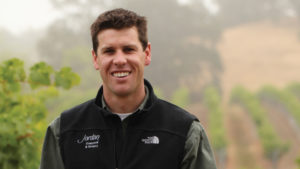
Brent Young, Jordan’s director of agriculture, is responsible for everything related to farming on the estate, and his goal was to ensure that the sanctuaries would be successful. Hummingbirds, butterflies and bees must have plenty of clean, freshwater to drink to ensure their survival. Young kept that in mind during the process. “We organized the plantings in proximity to natural resources around the property such as water,” he says. They also chose cooler areas that don’t have too much exposure to the sun or elevation. Once they’d determined the best locations, work began to convert wildland into sanctuaries, which required mowing the land, disking it twice in two directions and picking out rocks.
“We’ve always had volunteer wildflowers blooming in the sanctuary areas, so with the addition of the pollinators, we’ve already seen the estate teeming with life, especially this spring, with lots of bumblebees and hummingbirds around.”—Brent Young, director of agricultural operations, Jordan Vineyard and Winery
Planting began early in 2021. “We sowed seeds and also planted hundreds of small plants, and we have a germination project going with 4-H for milkweed plugs. Those seedlings are already in our greenhouse, and will be planted in the fall,” says Mattson. Species included milkweed, a host plant for the Western Monarch butterfly, which needs two specific types of native milkweed—California narrow-leaf milkweed (asclepias fascicularis) and showy milkweed (asclepias speciosa)—to survive. “You can’t save the Monarch without milkweed,” she adds because these butterflies only lay eggs on milkweed. The variety of milkweed is dependent on the location; there are many varieties nationwide. Growing milkweed from seed, however, can be a challenge, because germination requires a cold stratification process. Thus, Jordan worked with Warm Springs 4-H in Healdsburg on a germination project to grow 1,000 seedlings for spring planting.

Young adds that creating pollinator gardens takes patience, and the seeded sanctuaries will take about three years to become fully established—the same amount of time grapevines require to produce fruit. “As Pollinator Partnership’s Elizzabeth Kaufman told us, the first year is about planting and establishing roots, then everything will start to mature over the years,” he says. He reports that flowers are blooming in the hummingbird garden. “We’ve always had volunteer wildflowers blooming in the sanctuary areas, so with the addition of the pollinators, we’ve already seen the estate teeming with life, especially this spring, with lots of bumblebees and hummingbirds around.” As time goes on, he expects to see more pollinators, as colorful new habitats with a variety of flowering plants and shrubs of varying sizes and heights blossom and grow.
“Insects and plants have had this relationship of helping each other to reproduce for hundreds of millions of years.”—Nathan Rank, Ph.D., entomologist, Sonoma State University
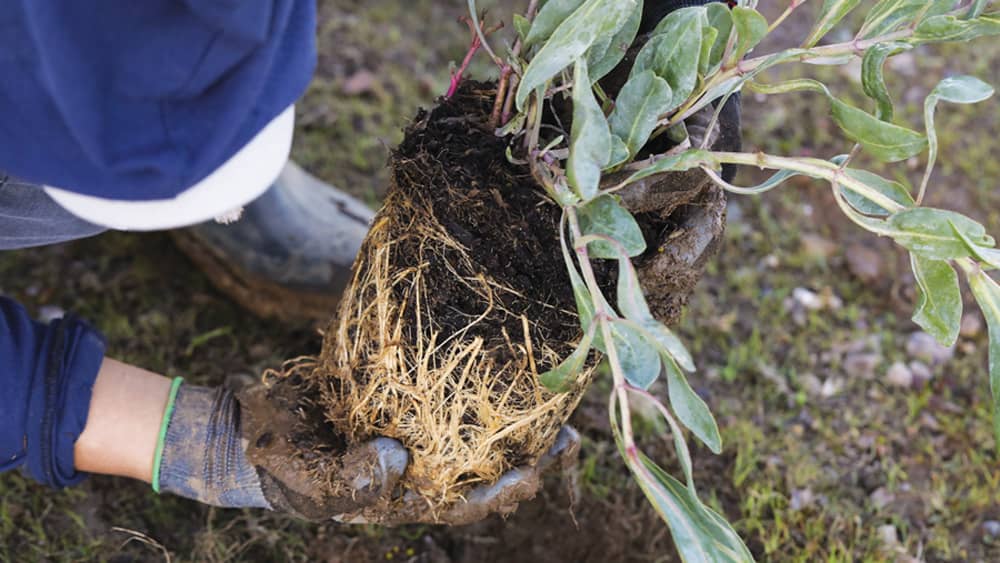
Grapevines are primary at a winery, but they’re self-fertilizing and don’t need pollinators. Cover crops in the vineyards, however, help replenish nutrients in the soil, keep out invasive weeds and avoid erosion in the rainy season. To take advantage of the opportunity to attract pollinators, Young modified the organic mix he uses for cover crops to add plants such as mustard and crimson clover, which produce beautiful blooms and give pollinators places to forage in the colder months before the first shoots appear on the grapevines. It’s an example of diversified agriculture and the way it reaches out in multiple directions to support the overall health of the ecosystem. He points out that while pollinators don’t have a direct impact on grapevines, creating a habitat that attracts them has other benefits, such as providing insects to pollinate vegetable crops. He considers creating a pollinator habitat a natural extension of the approach to diversity at the Jordan Estate. “We also support two lakes, which provide far more benefits to the farm than irrigation water,” says Young, “thanks to the fish and insects that keep the birds and bats nourished, as well as providing a life source for the pollinators.”
Going native
“Many plants absolutely need insects to reproduce,” says Nathan Rank, Ph.D., an entomologist at Sonoma State University (SSU). Without pollination, they might not set seeds and could become extinct, he explains, pointing out that we think of honeybees as insect pollinators, but other insects visit flowers and pollinate them as well. He gives flies and beetles as examples. “Insects and plants have had this relationship of helping each other to reproduce for hundreds of millions of years,” he says.

Human behavior, however, puts them at risk. Honeybees, for example, are highly social insects living in colonies, which can attract parasites that harm the entire colony. Commercial beekeepers sell bees or move them from one area to another to pollinate specific crops for a fee, and in doing so, risk spreading parasites if a colony is infected. The use of pesticides is another threat. “All insects are sensitive to pesticides,” says Rank. “It’s tricky to control pests without hurting pollinators and other insects.” A lot of insects and plants perished in wildfires in recent years, but fires have always occurred naturally. Some plants even depend on the natural fire cycle, and when they grow back, populations of pollinators associated with them would be expected to rebound rapidly. Greater damage occurred in the bigger, hotter fires the North Bay has experienced in recent years. “In some areas, we’re going to have to find a way to allow for more frequent fires to bring back the balance,” he says. Controlled burns are one solution, but they have other consequences, such as creating unhealthy air conditions.
Rank also believes we must change our thinking about landscaping. Large lawns are detrimental to pollinators because they don’t have the natural diversity of plants to support beneficial insects. “Experts who look at decline, one of the first recommendations they make is to transform our ornamental landscapes and create areas that are more friendly to insects,” he says. Simplifying the landscape too much is hazardous while maintaining native plant populations increases insect diversity, he explains. “If we want to do something to deal with the sad fact of insect decline, one thing we can do is add pollinator gardens.”
He believes Marin and Sonoma counties have done quite well in maintaining naturally occurring pollinator habitats by dedicating open space. There are a lot of refuges for insects, he says, but some areas have done better than others.
The buzz on bees
Bees, as a group, are the predominant pollinator locally. “There is a great diversity of bees in Sonoma County,” says Kandis Gilmore, who works in the biology department of SSU. Gilmore identified 62 species of native bees, and she did a study in the Laguna de Santa Rosa area several years ago. Native bees include bumblebees, sweat bees, mason bees, mining bees and leafcutter bees. Other local pollinators are hoverflies, which have stripes on the abdomen to look like bees in disguise, and though they go from flower to flower, they don’t gather pollen for their nests the way bees do. Squash bees, which feed on zucchini and pumpkin and nest in the ground. Honeybees are also common, but they’re not native and are less desirable because they compete with native bees for habitat. Beekeepers who collect honey can move them around to different locations because they are generalists pollinators and will feed on a variety of plants.

“A beekeeper might take a box to a location with lots of orange blossoms, and that’s how they get orange-blossom honey,” she explains. Similarly, if they’re placed in a lavender field, they’ll produce lavender honey. Bees are also vitally important for local crops such as apple trees, fruits and vegetables, and a variety of different bees, including mason bees and mining bees, pollinate berries. Ceanothus, an early bloomer also known as California lilac, attracts bumblebees and also draws hoverflies and a variety of little bees. Goldenrod is a late bloomer, and it provides nectar and pollen for bees that come out later in the season. Gilmore adds that bees can travel up to two miles within their home range, and she explains that a relationship between body size and home range predicts how far a bee will travel from its nest to food sources.
“We are all just visiting this planet, and it is up to each of us to do our part to make it a better place. It is also really fun to do these projects and share them with our visitors.”—John Jordan, proprietor and CEO, Jordan Vineyard and Winery
Gilmore shares her passion for bees with others as a member of the board of Conservation Works, a nonprofit program that matches landowners with youth groups through its Bee Patches program. It organizes planting days for the youth groups and supplies the plants, while the landowner provides irrigation. In February 2019, she worked with nine girls in Girl Scout Ambassador Troop 10280, 11th-grade students in local high schools, to plant a pollinator garden with native plants at Paradise Ridge Winery in Santa Rosa. They returned later to see the results and observe the pollinators the plants attracted. Conservation Works serves a four-country area and most recently has planted Bee Patches in Fort Bragg, Westport and the Middletown Rancheria.
Planting with purpose
Pollinator Partnership’s Dakin, who grew up in Sonoma County, says that one of the best ways people can preserve and protect pollinators is by creating new habitats and choosing plants wisely. He recommends finding those that are native to an area and choosing different varieties that will flower throughout the year by visiting the organization’s website. “We have our eco-regional planting guides on the website,” he says.

“Put in your ZIP code, and it will generate the guide for your area.” He also suggests assessing the area where you would like to create a garden to see what’s already growing, removing invasive non-native plants and replacing them with natives. It’s best to buy plants from a source nearby since they’re selected for the local environment and will do better. In addition, even though native plants are drought-tolerant, check the availability of irrigation because water is a big issue.
Dakin observes that the Monarch butterfly gets most of the attention because it’s a beautiful insect, and its numbers are noticeably declining. As a result, milkweed is in the spotlight. “The flower is beautiful, and it is a nectar-and-pollen resource,” he says, adding that it also attracts other pollinators, so it serves multiple purposes. As people learn more and become aware of the need for increased habitat and the benefits it delivers, other pollinators are getting help as well. The Bay checkerspot butterfly is another threatened species, and the larvae will feed only on a few specific plants. The planting plan at Jordan includes purple owl clover because, after the checkerspot butterfly’s eggs hatch, the caterpillars live on it and grow to the next stage of development, while adults feed on the nectar. The plant selection shows how making informed choices makes planting count for more than just its visual impact.
“We are all just visiting this planet, and it is up to each of us to do our part to make it a better place. It is also really fun to do these projects and share them with our visitors,” says Jordan. Pollinator gardens are a meaningful way to make a difference, but it appears they have the power to bring a great deal of satisfaction, too.
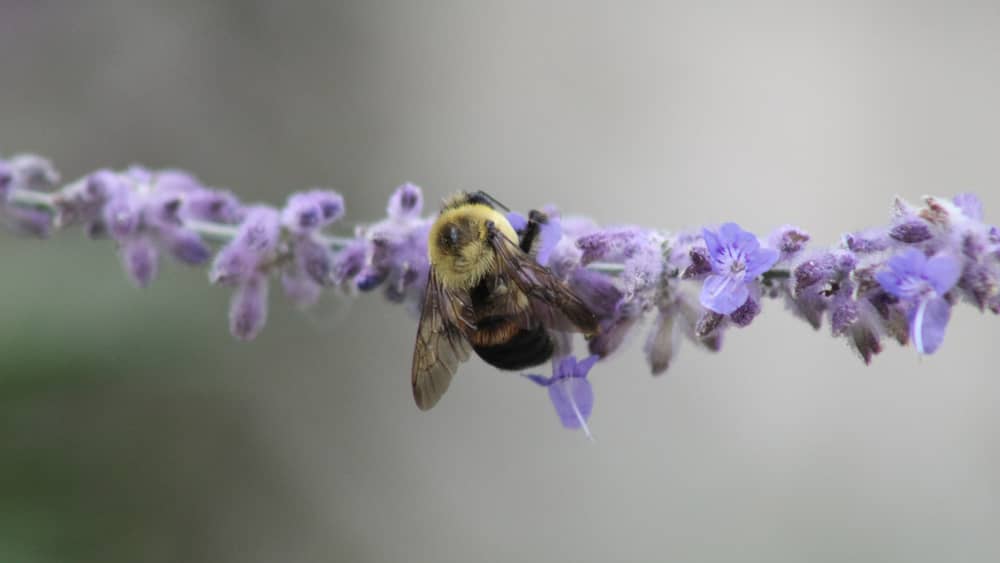
About Honey

Honey is one of nature’s miracles. It starts as nectar from flowers that bees collect and store inside the honeycomb in their hives, and then it gets broken down into simple sugars and becomes liquid honey, when bees fan it with their wings, causing evaporation. Bees need an ample amount for their own food supply. To harvest the remainder, beekeepers take the honeycomb frames out of the hive, remove the wax cap that bees make to seal the honey in each cell and then extract the honey in a centrifuge, which spins to force the honey out of the comb. It’s strained to remove any bits of wax or other particles left behind. After that, it goes into bottles and is labeled to prepare for sale. Look for “pure honey” on the label to ensure that honey doesn’t have any additives. Top-quality honey is pricy, but if it’s from local, organic plants, has no additives and the bees have been treated humanely, it’s a bargain.
Source: National Honey Board
The Vital Role of Pollinators
Butterflies, bees, moths, flies, hummingbirds and bats are all pollinators. They play an essential role in plant production because they collect pollen on their feet and bodies when they visit a flower and carry it unknowingly from the stamen (the male part) to the stigma (the female) part of either the same flower or a different one, fertilizing it to produce fruit and seeds. Most bees collect pollen intentionally, but many other pollinators pick it up by accident when it sticks to them while they’re feeding on the nectar in flowers. Some plants are self-pollinating, and the wind can also carry pollen, but insects and animals pollinate at least 75% of the earth’s flowering plants.
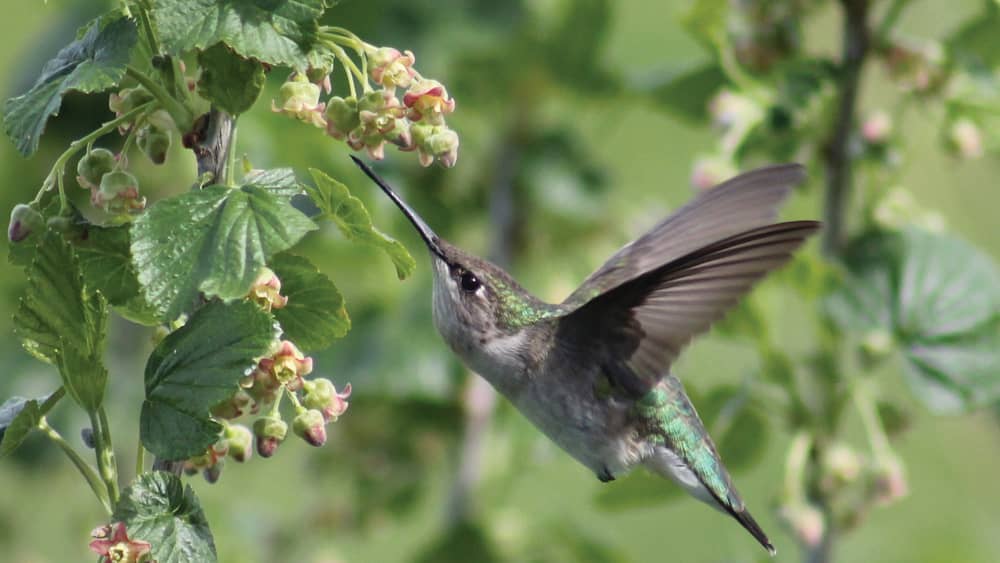
Source: National Parks Service
MONARCH Act: Butterflies at Risk
In the 1980s, more than 4 million Western Monarch butterflies overwintering in California on their annual migration. By 2017, that number had decreased to 200,000, and it declined further to 29,000 in 2019. By 2020, the annual count was 1,900. The Western Monarch is a candidate for the U.S. Fish and Wildlife Services Endangered Species list but is not considered a priority. 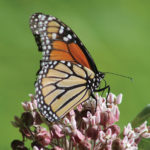
In March, U.S. Sen. Jeff Merkley of Oregon introduced the Monarch Action, Recovery, and Conservation of Habitat Act (MONARCH Act). After two readings, it was referred to the Committee on Environment and Public Works. Among the bill’s provisions, it establishes the Western Monarch Butterfly Rescue Fund, which requires the Department of the Interior to provide grant funding for the conservation of Western Monarch butterflies. In addition, the Department of the Interior must work with the National Fish and Wildlife Foundation to facilitate the implementation of the Western Monarch Conservation Plan, which the Western Association of Fish and Wildlife Agencies prepared.
Sources: Sonoma County Farm Bureau and congress.gov
Pollinator Partnership
“Pollinator Partnership is the world’s largest nonprofit dedicated exclusively to pollinator health issues,” says Miles Dakin. It works throughout North America and has projects worldwide. Two of its biggest projects are Monarch Wings Across America and Bee Friendly Farming.
Monarch Wings Across California is doing hands-on work with three large landowners in the Central Valley to enhance more than 1,000 acres. Bee Friendly Farming is a certification program that helps and recognizes farmers and ranchers, who are making efforts to support pollinators.
Pollinator Partnerships offers resources such as Bee Smart® School Garden Kits. Members of the community have opportunities to get involved, and among them is My Pollinators – My Story! which gives them a chance to share stories about their own pollinator gardens.

pollinator.org



